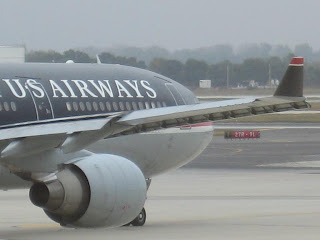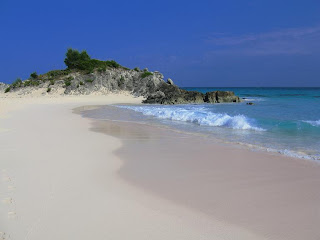I am proud of myself...
:-)

Cockpit dashboard for the Cherokee Warrior. Flying at 100kt, climbing through 3100ft at 500ft per minute and heading to 050°
.
The dashboard features all the standard instruments you would expect in a VFR - IFR - Day - Night certified aircraft. From left to right, from up to bottom we will find a clock, an airspeed indicator, an attitude indicator, an altimeter, an ILS receiver, an ADF receiver, a turn coordinator with a ball, a heading indicator, a vertical speed indicator and a VOR receiver. In the lower part of the dashboard lay the engine and fuel indicators whereas the communication and navigation displays are on the right. This aircraft is also equipped with a LORAN receiver which is a nice and fancy addon not commonly found in Europe.
.

.
I did most of my initial flight training in France in a Piper PA38-112 Tomahawk (also called Traumahawk...) but I haven't flown any Piper aircraft in the last three years. It was also a return to low-wing designs after a two-year break period. So, a return to my first love ?
Low-wing aircraft call for a slightly different technique for landings since there is a lot more ground effect and the aircraft tends to float over the runway. Therefore, to reach the pilot's holy grail of kiss-landing, subtle adjustments are required when transitionning from high wings such as Cessnas to low wings.
.
Cruising right over Atlanta sandwitched between a lower layer at 700ft and an upper layer at 10,000ft.
.

Dark picture but with thunderstorms all around, skies were dark
ETOPS certification makes things a lot easier for airlines operating over the North Atlantic as diversion airports are few and far in between. Once over the Atlantic, the closest airports are Hamilton in Bermuda, Narsarsuaq in Greeland, Keflavik in Iceland and Lajes in the Azores.

Wingletted 757 plugged on an auxiliary air conditionning system
The other thing that makes this Boeing 757 special is the installation of blended winglets designed by Aviation Partners. The 757 is capable of crossing the Atlantic range-wise but not by a very large margin. This is why airlines mostly use the 757 between the North-East coast of the US and North-West Europe. However, in order to account for strong jetstreams during the Winter and to operate the aircraft further inside Europe, airlines have added winglets that slightly improve fuel consumption and range for long operations.
Boeing 767-200
I was pretty happy to find a load of Boeing 767-200 at Philadelphia as these aircraft are slowly being retired and therefore are more and more difficult to spot. Most of them have already been retired and few airlines still operate them. Continental Airlines, American Airlines and US Airways are the largest operators of the type now but they already plan to phase them out in the coming years.

The Boeing 767-200 was the first aircraft of the 767 production line in Everett, WA. However most of the 767 production consisted of the stretched 767-300 and 767-300ER. US Airways still operate the early-built 767-200ER which features a somewhat higher gross weight and most importantly more fuel capacity.

Pushed back and starting the hairdryers
This version of the 767 is the second longest-range aircraft in US Airways fleet despite serving chiefly the airline for more than fifteen years. However, at the time the airline bought the airplane, operations to Europe were not planned and the airline decided to go with a rather low maximum take-off weight - 330,000lbs - thus tremendously limiting the range-payload envelope of the aircraft. This saddly reduces the capabilities of an otherwise very capable airplane. As a result, US Airways uses them mostly to serve its high capacity routes in western Europe.

The new color scheme is both classy and very curvy
After being towed away from the international pier, this 767 starts its own General Electrics CF6-80C2 engines and is about to go on its own power for another ride above the Pond.
Airbus A330-300
The Airbus twin widebody is the largest aircraft in US Airways fleet. It is also the yougest with deliveies starting in the late 90's. The A330 is used to serve core European destinations as well as Star Alliance partners hubs. I got lucky enough to find this one in the so called old new paint scheme that will slowly disappear in time.

This one was aimed for Star Alliance hub in Frankfurt. It stayed for several minutes at the gate after the jetway was removed in order to unload some baggage of no-show passengers. Some people will never get it...

Starting those massive Pratt&Whitney 4128 turbofans

Getting read for an eight hour flight over the Pond to Frankfurt am Main.
While awaiting for taxi clearance and experiencing the usual ATC delays at Philly, the aircraft starts its engines and extends the flaps and slats. Notice the ailerons tilted down and used as flaperons for take-off.
As a bonus, a pre US Airways-America West merger paint scheme on this A320. Radio callsign for America West aircraft was Cactus.
Cute?
.
That's it for a short description of US Airways long-haul fleet. By the way, did I mention that ETOPS also stands for Engines Turn Or Passenger Swim... ?
.
 Anyway, truth of the matter is that I was not really inside the infamous Bermuda Triangle but rather on the Northern edge.
Anyway, truth of the matter is that I was not really inside the infamous Bermuda Triangle but rather on the Northern edge.  .
.
Queen Elisabeth II is still the final authority here and a Governor coming from the United Kingdom is appointed to Bermuda. However, the islands are factually independent.
Bermuda
Well, the so-called bermuda is considered formal dressing here and the governor actually wears it. To be considered formal, the bermuda shall be worn two inches above the knees with knee socks and shoes. Sorry no flip-flop in front of Her Majesty...
.
Other visible remnants of the British time is the left driving as well as the Anglican church. The left driving might be the reason rental-cars are banned from the islands. Too many American and Canadian tourists that could potentially mess up with the left driving techniques in those not so wide and winding roads... And I believe this is great. Most of the things are within walking distance anyway and for those really wishing to travel all around the islands, there is an efficient bus and ferry transportation system (that I did abuse with my four day unlimited pass...). .
.
The 1609 settlement of British citizens led by Somers established the first recorded settlement in Bermuda in the site of St George. St George remained untouched by the economic boom of Hamilton and looks as if it had been frozen in time. Most of the buildings in St George were designed between the 17th and 19th century. No power lines, no telephone lines there, everything is underground. St George is now a UNESCO World Heritage Site.
.


The unfinished Church lies in the height of St George. A typical Anglican church as might be inferred from the architecture.
If it is believed that the islands have volcanic origins, then the tip of the now extinct volcano is believed to be 120 feet underwater. It most certainly emerged from water at a time when sea level were lower. Coral reefs have built on it and the ground is now mostly made of limestone. Right in the center of the main island, some caves with stalagmites and stalactites may be found. Stalactites and stalagmites grows from the deposition of calcium carbonates and other minerals over time. .
Crystal Cave
Crystal Cave lies 120 feet under ground exactly at sea level. The water seen in the picture comes from the sea through a network of natural canals. The upper two inches of water is made of fresh water dripping from stalactites whereas the water below is plain salty sea water.
.
One of the highlight of my visit to Bermuda was those pink-sand beaches. Bermuda is supposed to be famous for its pink sand. The distinctive color of Bermuda's sand is due to a single-celled animal called a foram, which grows in profusion on the underside of rocks. These animals have bright red skeletons, which when the foram dies, are eroded by the waves and mixed with the other matter that makes up Bermuda's sand to give the sand a pinkish hue.


A short video of the trip to Bermuda is also available here. Enjoy !!!
.
